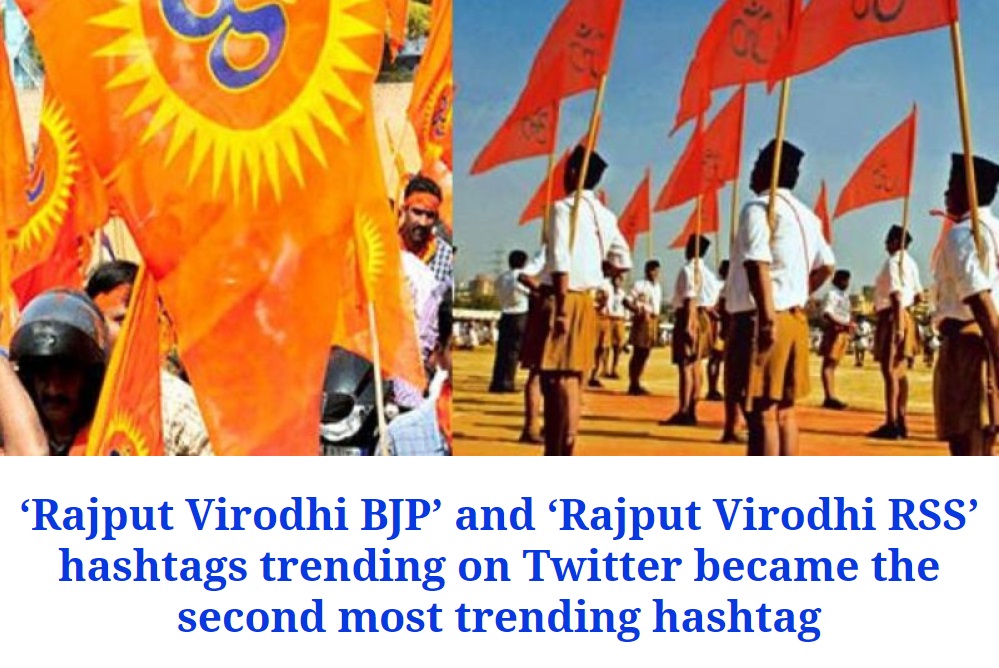[12]: On Victimhood in the Context of Kshatriyas (Rajputs)
There are two modes of internalising shared victimhood. One way is the informed way. You are fully aware, you have given it enough thought, you are aware of its implications, and yet you internalise it because it gives meaning to your sense of being. Dalit victimhood is like that. It shapes their sense of Being. They cannot conceive themselves as anything but oppressed. Being Oppressed is at the heart of their Beingness. The victimhood of a suicide bomber is like that as well. He sacrifices himself for a cause greater than him because to him it’s totally meaningful in the context of the victimhood ( real or perceived) he and his people have been subjected to. It gives him an expression and a sense of relief and so he does what he does.
Then there is a lazy way of internalising victimhood or any other kind of propaganda. That’s how the state propaganda through media works. Or the ideological propaganda of the Political parties works. Rajputs are always in his lazy mode. It’s no wonder that a lot of us have internalised the Hindu victimhood subconsciously. If we had been attentive we would have kept our Rajput identity in the foreground and Hindu identity in the background and that would have helped us to easily reject the Hindu victimhood. But it requires alertness and thinking. Things Rajputs don’t want to do.
I would like to elaborate upon a little on why the victimhood narratives will never work in the case of the kshatiyas. To begin with we need to roll out the two basic ontological categories. The first is ” Beingness – who u are” and the second is “Becoming- who you could be”. These two are related categories. Unless you have figured who you are, you can never understand what you could possibly become.
Every community has its own evolutionary history and therefore a particularly unique Beingness which it doesn’t share with the other. The Dalits were successfully able to leverage the victim hood narrative because their beingness was compatible with it totally. They have suffered for centuries together without having the luxury of any social mechanism to change their fate. They couldn’t hit back at their oppressors and therefore internalised an intergenerational guilt and lingering urge to express themselves. Their beingness in other words provided the necessary fertile ground for victimhood. In other words nobody had to go and convince them that they were victims of the social order and that they were pretty much reduced to live like subhumans. Victimhood was a part of their beingness.
As opposed to this, kshatiyas have a history of offsetting violence with counter violence. It’s not that we haven’t faced violent persecution historically. We most certainly have, but we have always avenged it sooner or later. We have had closures on account of dedicated fight backs and resisting violence like lions. And therefore in our beingness we hardly have any fertile ground for internalising any form of victimhood. Our basic beingness precludes the possibility of internalising victimhood. In other words, we cannot become that which we are not.
The crux of the matter is, you cannot borrow every idea, lock stock and barrel, just because it worked for a particular community. Because, it may not work in your case.
What has worked for us so far is the “threat perception of the dangerous other”. There is some mobilisation of Rajputs in the case of appropriation of Mihirbhoj Pratihar and other Rajput figures because we have been able to create enough urgency around the imminent threat from the dangerous other- subaltern social groups in this case..it is not very different from our historical habit of organizing ourselves inthe face of external threat. So, “othering the dangerous other” is the way to go. Victimization can be used along with it wherever it may have some use.
So let’s be true to ourselves and stop wasting our time on methods that haven’t worked and will not work for the Rajputs. Use those strategies that are in keeping with the basic “Beingness” of the Rajput and bolsters it.
A very interesting observation in the context of Rajput response to the Mihirbhoj issue that must be underscored is that we have seen this response only in the regions of West UP, Parts of Haryana and Rajasthan, as well as the Chambal belt of MP.
Why have we seen a reaction in these regions only ? The answer is simple. A decent Gujjar population exists in these regions. And Rajputs responded to counter them having become aware of the threat their activities pose to their Rajput identity.
I put it as “encountering the face of the dangerous other”. The awareness of the threat of the dangerous other is the real motivating force behind Rajput initiative and nothing else really.
In places where Gujjars do not exist. There is no ground activism on this issue and there will be none in the coming days as well. Until we succeed in making the Rajputs understand that the “real other” is the “Hindutva ideology” that they have internalized and hence weakened their original Kshatriya beingness.
Everything eventually boils down to discerning your beingness properly in a dialectical opposition to the other. This is the only vantage point from where any and all response to others is meaningful. As long as Rajputs are confused about their identity which is invariably in danger due to the existence of the other, there is little hope of progress. This is the most basic issue that needs to be fixed before we do anything else.
We are often confused about what victimhood really means. We often conflate it with the recognition of being wronged.. that’s a wrong understanding of it. Being wronged is merely the cause. It’s the manifest provocation. Now you can have many responses to this manifest provocation. Responding as a victim trying to gather sympathy for yourself from others and using that as a means to guilt trip your enemy directly or a third party ( state) arbitrator is an available choice or one of the possible responses to being wronged. But, it’s not the only response possible. There are others possibilities. And even when employed as a choice it won’t be effective for everyone equally for reasons already discussed.
“REMEMBER SHARED VICTIMHOOD IS A POSSIBLE RESPONSE TO BEING WRONGED BUT IT IS NOT QUITE THE SAME AS BENG WRONGED”.

